After their worst season in nearly 50 years, the Bears authored one of the more interesting offseasons in the NFL. They signed a slew of middling veterans in free agency but soon after made the biggest draft investment at quarterback in franchise history.
The quarterback position obviously took center stage in Chicago this offseason, and as a result of adding a starting quarterback in March and a high-end prospect in April, the Bears are operating on a unique timeline. High expectations aren’t in the cards for the 2017 Bears, but they will be a team to monitor because of what transpired during their player-acquisition period.
Notable signings:
- Mike Glennon, QB: Three years, $45MM. $18.5MM guaranteed.
- Prince Amukamara, CB: One year, $7MM. Fully guaranteed.
- Dion Sims, TE: Three years, $18MM. $6MM guaranteed.
- Marcus Cooper, CB: Three years, $16MM. $6MM guaranteed.
- Markus Wheaton, WR: Two years, $11MM. $6MM guaranteed.
- Quintin Demps, S: Three years, $13.5MM. $4.5MM guaranteed.
- Mark Sanchez, QB: One year, $2MM. $1MM guaranteed. $2MM available via incentives.
- Kendall Wright, WR: One year, $2MM. $1MM guaranteed.
- Tom Compton, T: One year, $1.85MM. $850K guaranteed.
- Eric Kush, OL: Two years, $2.7MM. $500K guaranteed.
- Christian Jones, LB: One year, $1.5MM. $500K guaranteed.
- Bradley Sowell, T: One year, $1MM. $200K guaranteed.
- Connor Barth, K: One year, minimum salary benefit. $155K guaranteed.
- John Jenkins, DT: One year, $900K. $100K guaranteed.
- Sam Acho, LB: One year, minimum salary benefit. $80K guaranteed.
- Benny Cunningham, RB: One year, minimum salary benefit. $80K guaranteed.
- Deonte Thompson, WR: One year, minimum salary benefit. $80K guaranteed.
 For now, Glennon will have another chance to show he can be an NFL starter. A recurring subject of trade rumors in recent years, the former Buccaneers third-round pick will throw more passes in Week 1 than he did in the past two seasons combined. But in less than two months, Glennon reverted to lame-duck status. Only instead of having the opportunity to display his qualifications for a starting job over the course of a sizable work sample (18 starts for the Bucs from 2013-14), the 27-year-old passer may not have much job security in his new city.
For now, Glennon will have another chance to show he can be an NFL starter. A recurring subject of trade rumors in recent years, the former Buccaneers third-round pick will throw more passes in Week 1 than he did in the past two seasons combined. But in less than two months, Glennon reverted to lame-duck status. Only instead of having the opportunity to display his qualifications for a starting job over the course of a sizable work sample (18 starts for the Bucs from 2013-14), the 27-year-old passer may not have much job security in his new city.
Bears fans witnessed a player with high-end tools deliver middling production for nearly a decade, but Glennon’s post-Jay Cutler audition might not even last through 2017. His guarantee pretty much tethers him to the Bears for this season alone, and Mitch Trubisky will be expected to assume command by 2018. The situation makes sense for the Bears, to some degree, in bringing in an average quarterback to run a team with low expectations while the hopeful prodigy learns. But a Brian Hoyer re-up may have been more reasonable for continuity purposes instead of authorizing a near-$20MM guarantee to a UFA who clearly isn’t in the long-term plans.
 Many Bears UFA deals were not needle-movers, with the franchise striking out on some big-money targets — from A.J. Bouye to Stephon Gilmore to an Alshon Jeffery re-signing — and the franchise instead spent money on several second-tier acquisitions. This took place at both cornerback and wide receiver.
Many Bears UFA deals were not needle-movers, with the franchise striking out on some big-money targets — from A.J. Bouye to Stephon Gilmore to an Alshon Jeffery re-signing — and the franchise instead spent money on several second-tier acquisitions. This took place at both cornerback and wide receiver.
Amukamara’s been a solid defender, albeit an injury-prone one, since coming into the league. The seventh-year man showed he could stay relatively healthy last season by playing 14 Jaguars games. The 28-year-old accepted another one-year pact and will be expected to lead Chicago’s corner corps. Cooper has not shown nearly the consistency his newly arriving counterpart has and was a nonfactor in Kansas City for much of his time there. Pro Football Focus graded Cooper — his four interceptions notwithstanding — as a bottom-10 corner last season with the Cardinals.
No cornerback prospects reside in the team’s pipeline, so the franchise could have to start over again in 2018 — especially after not picking up Kyle Fuller‘s fifth-year option.
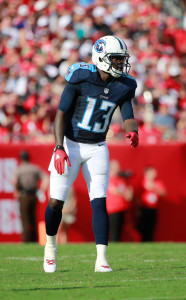 With Cameron Meredith out for the year, the situation is just as strange now at wide receiver.
With Cameron Meredith out for the year, the situation is just as strange now at wide receiver.
In lieu of convincing Jeffery to stay, the Bears went bargain shopping and will be relying on two buy-low options in Wheaton and Wright. Despite lacking the kind of numbers Wright put up with Jake Locker, the former Steelers supporting-caster received the bigger commitment of the two. Wright compiled nearly a 1,100-yard season under now-Bears OC Dowell Loggains with the 2013 Titans and has upside after being marginalized in Tennessee the past two seasons.
Wheaton’s struggled with injuries this offseason and missed 13 games in his contract year. While he did fare decently with the 2015 Steelers (17.0 yards per catch, five touchdown grabs), Wheaton not having the benefit of Antonio Brown could limit his Chicago prospects.
Should Kevin White be unable to stay healthy for a third straight season, Chicago may be forced to retool here in ’18. Instead of deploying wideouts who could grow alongside Trubisky, the Bears have placed some veterans that fit Glennon’s timetable more. (Although, to be fair, Meredith profiled as an ascending talent pre-injury.)
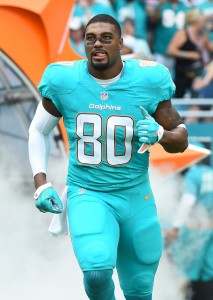 The Bears also have a veteran-laden tight end assembly, with a Zach Miller/Sims combination occupying this spot while Adam Shaheen develops. Sims showed little as a receiver with the Dolphins and is not coming off a season where he displayed much in the run-blocking department — at least, not in the view of PFF — and his contract parallels Glennon’s in being basically a one-year commitment. Virtually no guarantees exist on Sims’ deal in 2018 or ’19, so he’ll have to show more this season than he did during his first four (699 career receiving yards).
The Bears also have a veteran-laden tight end assembly, with a Zach Miller/Sims combination occupying this spot while Adam Shaheen develops. Sims showed little as a receiver with the Dolphins and is not coming off a season where he displayed much in the run-blocking department — at least, not in the view of PFF — and his contract parallels Glennon’s in being basically a one-year commitment. Virtually no guarantees exist on Sims’ deal in 2018 or ’19, so he’ll have to show more this season than he did during his first four (699 career receiving yards).
In not becoming a full-time starter until his age-30 season, Demps has traversed a unique career arc. The former Eagles and Texans backup and part-time starter with the Giants and Chiefs became a solid back-line defender upon returning to Houston. PFF rated Demps as its No. 10 safety in 2016, when he intercepted a career-high six passes. Based on recent production, the Bears did well to sign Demps for less than $5MM guaranteed. But he’s now 32 and may have delivered his best work already. Nevertheless, Demps is a proven safety who should help Chicago in the short term.
Notable losses:
- Mike Adams, T
- Matt Barkley, QB
- Brandon Boykin, CB
- Jay Cutler: Released, then retired
- Cornelius Edison: Waived
- David Fales, QB
- Jacoby Glenn, CB: Waived
- Brian Hoyer, QB
- Demontre Hurst, CB
- Alshon Jeffery, WR
- Ted Larsen, OL
- Paul Lasike, FB: Waived
- Matt McCants, T
- Logan Paulsen, TE
- Tracy Porter, CB: Released
- Eddie Royal, WR: Released
- Will Sutton, DL: Waived
- Cornelius Washington, DE
- Marquess Wilson, WR
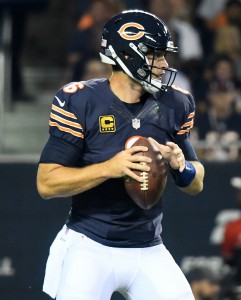 The Bears prying Cutler away from the Broncos seemed like a win in 2009, with franchise quarterbacks rarely changing teams and the then-25-year-old passer coming off a Pro Bowl berth. But the Bears either did not receive the player they thought they were getting, or the Cutler/Mike Shanahan divorce had seminal ramifications for the once-promising passer’s career. Cutler made zero Pro Bowls with Chicago but collected over $101MM during his Bears run, one that produced one playoff berth.
The Bears prying Cutler away from the Broncos seemed like a win in 2009, with franchise quarterbacks rarely changing teams and the then-25-year-old passer coming off a Pro Bowl berth. But the Bears either did not receive the player they thought they were getting, or the Cutler/Mike Shanahan divorce had seminal ramifications for the once-promising passer’s career. Cutler made zero Pro Bowls with Chicago but collected over $101MM during his Bears run, one that produced one playoff berth.
Chicago will start over again at quarterback. While Cutler turned out better than the Bears’ recent first-round quarterback investments before him, he did not deliver on the promise he showed in Denver. Adding to the unlikely outcome of the seminal trade, the Broncos used the picks acquired (with Demaryius Thomas and Eric Decker acquired as a result of the Cutler swap) to help coax Cutler’s eventual franchise-passer replacement, Peyton Manning, to sign in Denver.
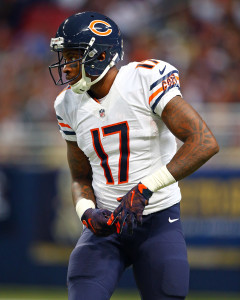 Cutler’s top mid-2010s target, Jeffery was not interested in coming back to the Bears. While soft-tissue injuries and a PED suspension dogged the former second-round pick-turned-franchise-tagged player, Jeffery was a legitimate No. 1 wide receiver. The Bears have now lost two of those in three years, in trading Brandon Marshall — who delivered a Pro Bowl slate with the 2015 Jets — and watching Jeffery sign with the Eagles.
Cutler’s top mid-2010s target, Jeffery was not interested in coming back to the Bears. While soft-tissue injuries and a PED suspension dogged the former second-round pick-turned-franchise-tagged player, Jeffery was a legitimate No. 1 wide receiver. The Bears have now lost two of those in three years, in trading Brandon Marshall — who delivered a Pro Bowl slate with the 2015 Jets — and watching Jeffery sign with the Eagles.
Despite playing just five seasons with the 95-year-old franchise, Jeffery is the team’s third-leading wideout. He and Marshall are responsible for four of the team’s top eight receiving-yardage seasons, so March’s defection signaled a critical point on the franchise’s timeline.
Hoyer and Barkley each trekked to San Francisco, but the 49ers cut Barkley. Hoyer played well for the Bears, and the team met with the quarterback’s reps just before free agency. Although, he was reportedly a mere fallback option for the Bears. Hoyer bolted quickly to sign a more team-friendly deal than Glennon received. Hoyer completed 67 percent of his passes in six games last season and has delivered better work than Glennon, but he signed for just $12MM over two years.
Trades:
- Acquired a 2017 first-round pick (No. 2; QB Mitch Trubisky) from the 49ers in exchange for a 2017 first-round pick (No. 3; DL Solomon Thomas), a 2017 third-round pick (No. 67), a 2017 fourth-round pick (No. 111), and a 2018 third-round pick.
- Acquired a 2017 second-round pick (No. 45; TE Adam Shaheen), a 2017 fourth-round pick (No. 119; RB Tarik Cohen), a 2017 sixth-round pick (No. 197), and a 2018 fourth-round pick from the Cardinals in exchange for a 2017 second-round pick (No. 36; S Budda Baker) and a 2017 seventh-round pick (No. 221).
- Acquired a 2017 fourth-round pick (No. 112; S Eddie Jackson) from the Rams in exchange for a 2017 fourth-round pick (No. 117; WR Josh Reynolds) and a 2017 sixth-round pick (No. 197).
The trade for Trubisky shocked most observers, and it was clearly a solid move for the 49ers in picking up three draft choices to move down one spot. The Browns were rumored to be enamored with the Cleveland-area product, but it would have taken a lot for them to move into the position of holding the Nos. 1-2 picks. It’s unclear who the Bears were negotiating against here.
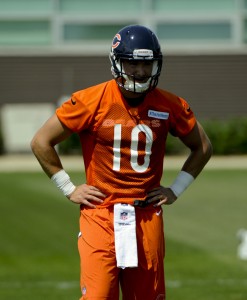 Nevertheless, Trubisky — a one-year starter at North Carolina — being what Ryan Pace and Co. hope for would make the trade-up cost irrelevant. Of course, plenty of doubt exists about that. This selection reportedly expanded the divide between Pace and John Fox, with the former more likely to see the Trubisky era through than the latter, but the duo will be tasked with making this unique arrangement work for now.
Nevertheless, Trubisky — a one-year starter at North Carolina — being what Ryan Pace and Co. hope for would make the trade-up cost irrelevant. Of course, plenty of doubt exists about that. This selection reportedly expanded the divide between Pace and John Fox, with the former more likely to see the Trubisky era through than the latter, but the duo will be tasked with making this unique arrangement work for now.
But the Bears not being expected to compete for the playoffs this season will make it tempting to test the latest quarterback-in-waiting. Trubisky has now surpassed Sanchez on the depth chart, moving him closer to that impending ascent. While the plan remains to roll with Glennon and let Trubisky develop from the sideline, Pace acknowledged the former Tar Heels talent has made steady strides.
Chicago’s been one of the worst modern franchises at identifying quarterback talent. Denver’s 2006 first-round pick, Cutler outdid the work of Rex Grossman (Round 1, 2003) and Cade McNown (R1, 1999). Trubisky enters the Windy City with less of a collegiate pedigree than those signal-callers. While much of Trubisky’s future supporting cast is not yet known, he should see the field at some point this season with an older skill-position contingent. This might not do much for rapport-building, but having the likes of Wright and Miller around could provide some key safety nets while the 23-year-old learns.
Draft picks:
- 1-2: Mitch Trubisky, QB (North Carolina)
- 2-45: Adam Shaheen, TE (Ashland)
- 4-112: Eddie Jackson, S (Alabama)
- 4-119: Tarik Cohen, RB (North Carolina A&T)
- 5-147: Jordan Morgan, OL (Kutztown)
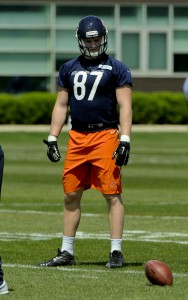 Interestingly, the Bears supplemented their raw passing prospect with a slew of small-school talents. Shaheen represents the incredibly rare Division II performer who left school early. Initially a Division II basketball player at Pittsburgh-Johnstown University (Pa.), the 6-foot-6, 278-pound pass-catcher transferred to Ashland (Ohio) and caught 70 passes in 2015 and set a program record with 16 touchdown receptions a year later.
Interestingly, the Bears supplemented their raw passing prospect with a slew of small-school talents. Shaheen represents the incredibly rare Division II performer who left school early. Initially a Division II basketball player at Pittsburgh-Johnstown University (Pa.), the 6-foot-6, 278-pound pass-catcher transferred to Ashland (Ohio) and caught 70 passes in 2015 and set a program record with 16 touchdown receptions a year later.
Shaheen’s timetable lines up with Trubisky’s, with the massive tight end set to open the season behind Sims and Miller on the depth chart. Shaheen’s development may be overshadowed, like just about every other aspect of the 2017 Bears not involving, by what happens at quarterback. But the raw talent’s seasoning will worth observing since he’s being groomed to take over soon at this position.
Cohen’s arrival helped force Jeremy Langford off the roster. The diminutive back blended in with the franchise’s draft profile heavy on non-Division I-FBS prospects, but the 5-7 runner could be summoned to action early this season. Unlike Shaheen, he profiles as a backup, however.
The Bears’ recent safety investments profile as about the only young talent for fans to observe in this secondary this season, and Jackson appears to have usurped 2015 fifth-rounder Adrian Amos. The Bears have the former Crimson Tide starter atop their Week 1 depth chart — ahead of Amos and 2016 fourth-rounder Deon Bush.
Extensions and restructures:
- Charles Leno, T: Extended through 2021. Four years, $38MM. $21.5MM guaranteed.
 While Leno may not be a well-known NFL commodity in toiling for some off-the-grid Bears teams, the left tackle is now a big part of the franchise’s future. Soon to be 26, Leno will begin his third season as a Bears starter and do so having made the rise from seventh-round pick to a player earning upper-echelon offensive line money. Pro Football Focus graded Leno as its No. 42 tackle last season, and his 2016 work proved enough for the Bears to commit before the edge blocker’s contract year.
While Leno may not be a well-known NFL commodity in toiling for some off-the-grid Bears teams, the left tackle is now a big part of the franchise’s future. Soon to be 26, Leno will begin his third season as a Bears starter and do so having made the rise from seventh-round pick to a player earning upper-echelon offensive line money. Pro Football Focus graded Leno as its No. 42 tackle last season, and his 2016 work proved enough for the Bears to commit before the edge blocker’s contract year.
The ex-Boise State cog now earns $9.25MM annually. The deal ties Leno to the Bears for at least the next two seasons and makes him a top-15 tackle in terms of per-year average — ahead of Jason Peters, Duane Brown, Jared Veldheer and Donald Penn by this measurement. Leno’s contract keeps him under Bears control for five more seasons, joining Kyle Long (signed through 2021) and Cody Whitehair (through 2019) as cornerstones.
Other:
- Declined 2018 fifth-year option for CB Kyle Fuller ($8.526MM).
- Learned WR Cameron Meredith would miss the 2017 season (torn ACL).
- Learned OL Eric Kush would miss the 2017 season (torn hamstring).
- Claimed FB Michael Burton off waivers from the Lions.
- Signed 13 undrafted rookie free agents.
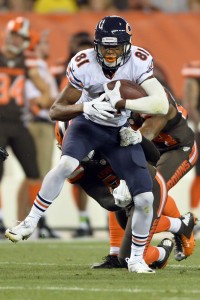 Chicago’s offseason cornerback pursuits and eventual signings continue to point to the organization having a low opinion of Fuller, who is now entering a contract year. He missed all of last season with a shoulder injury and was rumored to be available for a late-round pick this offseason. Stranger breakouts have occurred, however, and the Bears could use Fuller to belatedly show he can be a key part of their secondary. Because the cornerback contingent does not presently have much on which to build.
Chicago’s offseason cornerback pursuits and eventual signings continue to point to the organization having a low opinion of Fuller, who is now entering a contract year. He missed all of last season with a shoulder injury and was rumored to be available for a late-round pick this offseason. Stranger breakouts have occurred, however, and the Bears could use Fuller to belatedly show he can be a key part of their secondary. Because the cornerback contingent does not presently have much on which to build.
The Meredith setback will cause the Bears’ UFA signings and White to play bigger roles. A 2015 UDFA, Meredith took an unlikely route to becoming Chicago’s No. 1 receiver. But it will be a while before he can hold that title again. White has missed 28 of a possible 32 games in his career, and while the ex-West Virginia standout remains a key part of this passing attack due largely to that No. 7 overall draft status, he has been one of the least productive first-round receivers in memory across his first two seasons. Meredith’s injury opens the door for White, but it hurts the Bears’ aerial operation considerably.
Top 10 cap charges for 2017:
- Mike Glennon, QB: $14,000,000
- Kyle Long, G: $8,000,000
- Pernell McPhee, LB: $7,825,000
- Prince Amukamara, CB: $7,000,000
- Lamarr Houston, LB: $6,990,000
- Danny Trevathan, LB: $6,850,000
- Josh Sitton, G: $6,822,916
- Akiem Hicks, DL: $6,200,000
- Bobby Massie, T: $6,034,375
- Dion Sims, TE: $5,333,333
Chicago’s offseason may have been a bit uneven, and its roster might be operating on mismatched timelines, but the Bears chucking their long-held status quo profiled as one of this year’s most interesting stories. The Bears’ Glennon games may not be especially captivating, but should Trubisky usurp the starter this season as many expect, the dawn of the next era will be worth monitoring to see if the quarterback-starved franchise finally made the right call.
For now, the wait until the Trubisky run begins for a fanbase that hasn’t seen its team make the playoffs in seven years.
Information from Over the Cap and Roster Resource was used in the creation of this post. Photos courtesy of USA Today Sports Images.